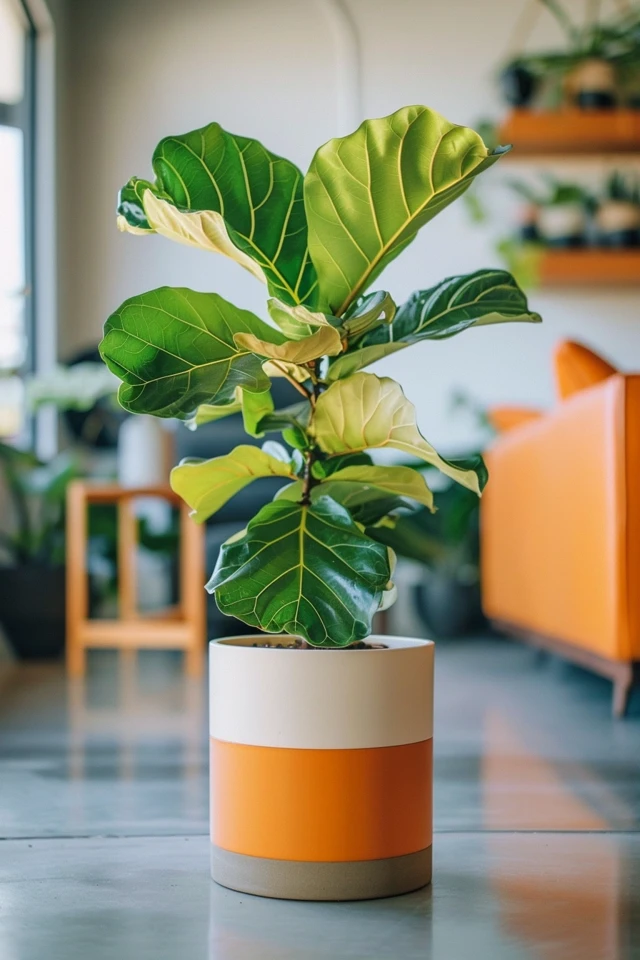Are you looking to transform your fiddle leaf fig (Ficus lyrata) into a fuller, bushier tree? Branching a fiddle leaf fig can be achieved through two main methods: pruning and notching. These techniques disrupt the natural growth patterns of the plant, stimulating the development of new branches. In this article, I will share my top tips and tricks on how to successfully branch your fiddle leaf fig.
Key Takeaways:
- Pruning and notching are effective methods to branch a fiddle leaf fig.
- Pruning involves cutting the main stem, while notching requires careful incisions above nodes.
- Pruning should be done during the spring or summer, while notching is best on woody stems.
- Patience is key, as it may take time for new branches to appear.
- Leave the leaves on the trunk until the plant establishes its new branches.
The Secret to Successful Fiddle Leaf Fig Branching: Pruning
Pruning is an effective method to branch a fiddle leaf fig. The main concept behind pruning is to disrupt apical dominance, which is the natural tendency of the main vertical stem to grow more vigorously than side stems. By pruning the apex branch, the flow of growth-regulating auxin is disrupted, allowing the lower nodes to develop branches.
When pruning a fiddle leaf fig, it’s important to consider the severity of the pruning, as more severe pruning can result in greater regrowth. The most vigorous shoot growth usually occurs within 6 to 8 inches of the pruning cut.
To prune a fiddle leaf fig, start by deciding how much of the plant you want to cut, keeping in mind that the longer the section you cut, the more significant the branching will be. Identify the node above which you want to make the cut, and use sterile pruners to make a clean cut just above the top of the node.
It’s also important to leave the leaves on the trunk until the plant has established its new branches, as the leaves help grow the new lateral buds.

Pruning is an essential technique for branching fiddle leaf figs. It allows you to control the growth pattern of the plant and create a fuller, more aesthetically pleasing appearance. By pruning the main stem and encouraging branching from lower nodes, you can transform a single-stalk fiddle leaf fig into a beautiful bushy tree.
- Decide how much of the plant you want to cut. Remember, the longer the section you cut, the more significant the branching will be.
- Identify the node above which you want to make the cut. This is where new branches will develop.
- Use sterile pruners to make a clean cut just above the top of the node.
Remember, patience is key when pruning a fiddle leaf fig. It may take some time for new branches to appear and for the plant to establish its new growth. But with proper care and attention, you’ll be rewarded with a beautifully branched fiddle leaf fig.

Exploring Notching as an Alternative Method for Branching Fiddle Leaf Figs
Notching is another method that can be used to branch a fiddle leaf fig, providing an alternative to pruning. While not as widely known or practiced, notching involves making precise incisions above nodes to disrupt the flow of growth-regulating hormones, specifically auxin. Although it is considered more advanced and may not yield consistent results like pruning, notching can be an effective technique to encourage branching in your fiddle leaf fig.
When notching a fiddle leaf fig, it’s important to select a woody stem rather than green, softer growth. Using a clean and sharp blade, make an incision just above a node, about one-third of the way around the stem and no deeper than one-third. The purpose of making the incision above the node is to disrupt the growth-regulating hormones that inhibit branching. It’s critical to monitor the plant closely after notching and allow sufficient time for buds to form and develop into branches.
Similar to pruning, it is crucial to leave the leaves on the trunk until the plant has established its new branches. The leaves play a crucial role in supporting the growth of these new lateral buds. Notching can be a viable alternative to pruning if you prefer to maintain the height of your fiddle leaf fig while still promoting branching. Remember, patience is key, as it may take some time for the plant to establish its new growth and for the new branches to appear.


